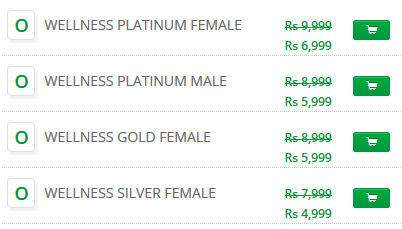My notes on Thyrocare Technologies Ltd:
Why Thyrocare has higher margins than other players?
EBITA margins of ~41% vs 25-27%
1. Asset light model:
One central lab and 6 regional lab. Samples get air lifted to CPL for around Rs 5. Dr Lal has about 189 labs and Thyocare’s lab but for the CPL is all under rented lease model only.
2. Lower Employee Cost
A quick look at the Q1FY18 results tell that Thyrocare employee benefit cost is 8% versus 17% for Dr Lal. Thyrocare tends to recruit freshers maybe most of their operations are automated and thrust is given to technology. Dr Lal on the other hand recruits personnel, like in the IT industry, when they anticipate higher business going forward.
3. Focus on preventive and wellness tests
I myself am on Paleo diet and lifestyle and as there are more awareness about the same, preventive tests will be on the rise. It is repetitive, wider base (people sick will be much much lower than healthy individuals wants to test) and multiple tests per sample. I can vouch for this that as there is more awareness, people will take tests to know their body better with respect to certain parameters like Vit -D, testosterone, lipid profile, thyroid, HbA1C, etc.
4. No Government interference
Dr Lal does tests when Chikengunya, Dengue or swine flu, etc. breaks out. Government has tie up with them and they conduct tests which may be high volume but lower margins. Thyrocare doesn’t have to deal with this though it could be a good thing as operational leverage kicks in and hardly there is any incremental costs associated.
5. Cost conscious
Apart from the above, it seems Velumani is plain thrifty. Be it taking Re 1 salary, doing Rs 9999 PET-CT scan or low cost Sugar Scan he wants to get into business opportunities where he can bring down the cost and still be profitable.
Other than the above, this industry is a not capital intensive and throws out free cash. Equipment are not owned and provided by vendors, hub and spoke model where geographical expansion is possible with minimum capital outlay and economy of scale and operating leverage is achieved with large volume of samples tested.
Risks and Concerns
1. Commodity-like service/product
Do we tend to take tests with the cheaper price offered vendor? I don’t think so. Here trust, branding matters. I wanted to take a whole body check up with Thyrocare but my mom says “don’t take risk and go with Apollo only.” Dr Lal’s management has given a example of Boeing flight. Biman Bangladesh Airlines, Pakistan International Airlines, Emirates, Singapore Airlines all fly almost the same product but we tend to have preference.
Nonetheless this is a risk when many branded players vie for the same pie going forward.
2. Limited pricing power
Maybe due to the above point. Unlike businesses like Wonderla or Eicher who take price hikes regularly and yet manage to grow, diagnostics businesses can’t do the same.
Players have to resort to discounts like:


Diagnostics Industry - Tailwinds and opportunities
1. Preventive and wellness tests
As mentioned above this is a very interesting thing to playing out, IMO. As the awareness increases, preventive tests will also go up. Many people who follow the Paleo lifestyle do take wellness tests multiple times a year.
As awareness increases, we would have people not liking to spend on medicines (holistically speaking) or “normal” treatment. Further with drug price cap, generics prescription and medical devices (knee cap, stents, etc.) price cap, these businesses might not fetch the same kind of returns as in the past. TTL with its already low price (comparatively) is positioned well to take advantage.
2. Asset Light business
Got to love businesses which throws free cash. That cash is being used for scaling up for setting up RPLs and PET-CT scan centers. Need to monitor how the business of NHL is progressing.
There are other reasons like public healthcare spends is low, more stringent accreditation/regulation helping established players, improving medical insurance (annual free health check is now available for policies), income tax deductions, medical tourism potential, etc. which are covered in this thread and can be looked up in the RHP, corporate presentations and annual reports.
TTL has guided 25% growth along with 40% margins going forward and Rs 300 incremental revenue for the next 5 years.
Disc: Not invested in TTL or DLPL. I feel TTL is a good business, if not a great business. I do not know if investment can be made at these valuations. But am thinking as a portfolio strategy where I may replace my pharma businesses (partially or full) for diagnostics business.


